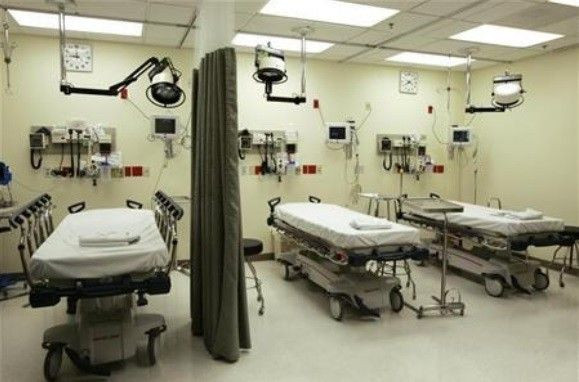Healthcare Atlas reveals Australians receiving different levels of treatments, intervention despite similar conditions

Many Australians across the country are receiving different levels of treatment and intervention despite having similar health conditions. This comes from the first-ever Australian Atlas of Healthcare Variation showing the largely "likely to be unwarranted" differences in rates of medical and surgical interventions provided across the country.
The Australian Commission on Safety and Quality in Health Care launched the Atlas on Thursday with Minister for Health Sussan Ley. The Atlas shows the substantial variations in healthcare, such as diagnostic services, surgical, mental health and antibiotic prescribing, across the country.
The Healthcare Atlas reveals huge variations in surgery across Australia. Women in regional areas were found to undergo hysterectomy, the removal of the uterus, over five times higher than those in metropolitan cities.
Per 100,000 women, 225 underwent the procedure in the Northern Territory, while there were a range of 349 women in Western Australia who received hysterectomy to treat heavy menstrual bleeding, and in some cases, treatment of chronic pelvic pain and endometrial cancer.
Furthermore to the rates of surgeries, Glenelg has the highest number of children under 17 having their tonsils removed. It has six times the rate of tonsillectomies in children compared to other parts of Australia.
Despite being the last resort for back problems, there were more than 17,000 lower back or lumbar spine surgeries performed nationally in 2010 to 2013.
Inner regional areas had the higher rates of patients admitted for the surgery compared to major cities, while lowest rates were in remote areas. Tasmania had the highest at 113 per 100,000 adults.
In Melbourne, people in wealthy eastern and bayside suburbs are among the highest users of colonoscopies.
The Healthcare Atlas also examined variations in antibiotic use of Australians in different regions. Highest rates of antibiotic prescription are in areas in western Sydney, including St Marys, Fairfield, Green Valley, Mt Druitt, Liverpool and Bankstown.
The report suggests that the variations could be due to less strictly observed clinical standards, doctors and patients potentially using different criteria to recommend and agree to treatment, and metropolitan areas may have more specialists than other areas.
Besides surgeries, the Healthcare Atlas shows the difference in numbers of young and old Australians using treatments for mental health problems. Poorer people in Frankston in Melbourne were the greatest users of mental health plans for psychological care.
New South Wales and Queensland had the highest number of children younger than 17 using prescribed medications for ADHD, depression and psychotic disorders.
It is difficult to identify how the level of treatment for the health conditions was unnecessary in the country, the report stated. "The challenge in identifying and addressing unwarranted variation is that for many healthcare interventions we do not know what rates of intervention deliver the best outcomes for patients and the broader community.”
Atlas Advisory Group Chair Professor Anne Duggan said the variations indicate that “people with the same health conditions, concerns or problems may not be receiving the same care as others, elsewhere, with the same problems.”
The government considers that health literacy rates should be improved. The report estimated around 60 percent of Australians had low health literacy.
The report calls for state and territory health departments to consider the variations in treatment rates and to provide plans to address the differences.
“The atlas is a powerful resource to help us identify and reduce unwarranted variation in health care, while also highlighting some population health concerns that warrant further investigation,” commented Professor Villis Marshall AC, chair of the Commission Board.
Contact the writer at feedback@ibtimes.com.au or tell us what you think below




















